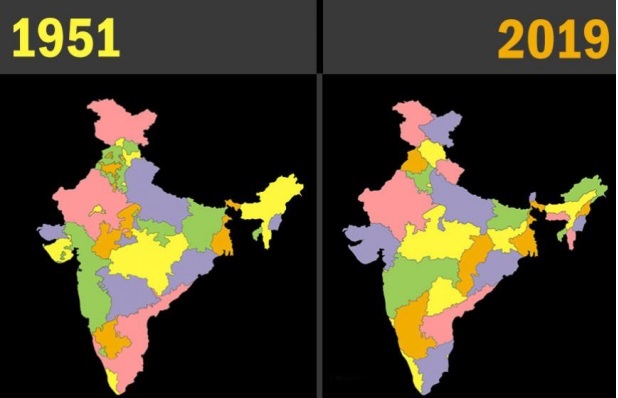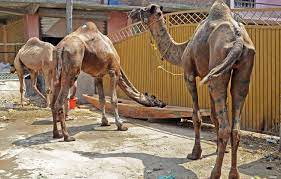
The J&K Reorganisation Act 2019, and why it has become a bone of contention in the delimitation process
The delimitation commission comprises Chief Election Commissioner Sushil Chandra, former Supreme Court Justice Ranjana Prakash Desai, and the J&K Election Commissioner.
The Jammu and Kashmir Reorganisation Act, 2019, has become a point of discussion in the delimitation process amid the Narendra Modi’s government’s attempt to restart the political process in Jammu and Kashmir and take the Valley towards normalcy. J&K-based political parties have been urging the government to restore the pre-August 2019 status.
Notably, the bill which was passed on August 5, 2019, had bifurcated the state of Jammu and Kashmir into two parts – the Union Territories of Jammu & Kashmir and Ladakh. The Act also scrapped Article 370, revoking the special status assigned to Jammu and Kashmir. Before we tell you why the Jammu and Kashmir Reorganisation Act 2019 is proving to be a bone of contention in the delimitation process, know about the key facts about it:
- As per the Act, Jammu and Kashmir as well as Ladakh are now Union Territories. Jammu and Kashmir will have a legislative assembly.
- The Union Territory of Ladakh includes Leh and Kargil.
- The UT of Jammu and Kashmir has been given five Lok Sabha seats while one has been given to Ladakh.
- Earlier, the state of Jammu and Kashmir had 87 assembly constituencies including that of the Ladakh region. Twenty-four seats of the assembly continue to remain vacant as they fall under Pakistan-occupied Kashmir (PoK). Now, the number of assembly seats after the delimitation exercise may go up to 114.
- The L-G will have the power to dissolve the Jammu and Kashmir Legislative Assembly. The delimitation of constituencies will be determined by the Election Commission.
- While the assembly will have the power to enact laws, in case of inconsistencies between laws made by Parliament and laws made by the Legislative Assembly, earlier law shall prevail and law made by the Legislative Assembly shall be void.
- The L-G will have the power to promulgate ordinances that shall have the same force and effect as an act of the Legislative Assembly.
The delimitation commission, which recently visited the UT for four days and held meetings with several stakeholders, has time until March 6 next year to redraw the boundaries and carve out new constituencies.
While almost all parties met the delimitation commission, Mehbooba Mufti’s PDP had stayed away from the meeting. PDP general secretary Ghulam Nabi Lone Hanjura had alleged that the outcome of the commission’s exercise is widely believed to be pre-planned and it may further hurt the interests of people. He also termed August 2019 move illegal and unconstitutional.
The delimitation commission comprises Chief Election Commissioner Sushil Chandra, former Supreme Court Justice Ranjana Prakash Desai, and the J&K Election Commissioner. The commission has said that many districts and constituencies overlap and the delimitation exercise is mandatory to set things right.
However, there are apprehensions among the political class of Jammu and Kashmir that the process is yet another attempt by the Centre to disempower the people of Kashmir, an allegation which has been refuted time and again by the Centre.
Also, regional political parties want Article 370 and the special status of Jammu and Kashmir to be restored. While the Modi government is willing to restore full statehood, it has ruled out restoration of Article 370. Also, assigning more powers to the L-G and making the law passed by Parliament supreme is said to have gone against the will of regional leaders. Now, the Constitution of India will apply to the UTs of J&K and Ladakh while the separate constitution of the erstwhile state of Jammu and Kashmir was rendered infructuous on 5 August 2019. This has also irked the regional leaders.
Crucially, the Jammu and Kashmir Reorganisation Act provides for a new legislature in the UT with 90 seats, plus 24 reserved for PoK constituencies. This provision entails carving out seven extra constituencies from the previous Legislature, an exercise that the delimitation process is slated to achieve. The bone of contention here is that most Kashmir-based parties believe that all these new constituencies may go to the Jammu province, where BJP has traditionally held an upper hand.
In the last Assembly elections, the BJP had won 25 seats in Jammu and Kashmir, all of them in the Jammu region. In the outgoing House, Jammu had 37 seats and Kashmir 46 other than the four seats in Ladakh which was accorded the status of a separate Union Territory following the abrogation of Article 370 and the subsequent passage of the Jammu and Kashmir Reorganisation Act.

